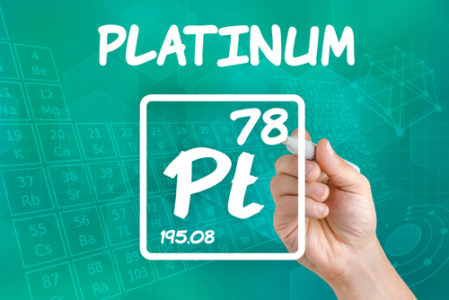Platinum is a fairly recent addition to the hierarchy of precious metals. Since its discovery, platinum has become known for having value in a variety of industries like automotive, medical, and of course jewelry. However, that wasn’t always the case. Platinum has grown into its value over the years.
A Brief History of Platinum
The rediscovery of platinum happened in Spain in the 17th century. The Spanish considered the metal to be a worthless contaminant. Platinum rose to validity as a precious metal pretty quickly, however. In 1748, platinum went from being discarded from silver mines to being considered a precious metal. That year a platinum chalice presented to Pope Pius VI. A platinum medal was also presented to Napoleon Bonaparte. This further increased its value. Platinum was used to create the International Prototype Kilogramin in 1789. This object serves as the definition for the magnitude of a kilogram for the metric system to this date.
Today: Platinum for Dental Work
Throughout the years platinum has increased in value and use. By the later half of the 20th century, the precious metal had become useful as part of the makeup of automobile parts. Today, catalytic converters account for approximately 48% of the platinum sold annually. Aside from its use in cars, platinum has maintained its place in the jewelry world because of its sophisticated appearance. The durability of platinum has also proved worthy in the dental profession as many technicians like the strength it provides to crowns and bridges.

Foiled…In A Good Way
Pure platinum is very strong, so it can be difficult to work with. However, in the world of dentistry, it has come in handy when making porcelain veneers. The platinum foil technique involves rolling pure platinum into extremely thin sheets. Dentists fuse platinum to make it malleable enough to provide the internal form to porcelain restorations. Platinum foil is highly valuable when it comes to cashing in dental scrap because it is usually 99.9% platinum. When marking platinum, it is vital to know your alloy and whether it contains other platinum group metals like iridium, palladium, and ruthenium. The US National Stamping act considers it deceitful to mark any piece of jewelry or alloy with the word “Platinum” or any abbreviation unless it consists of 950 parts per thousand pure platinum.
How Valuable Is Platinum?
Platinum has seen fluctuations in price over the years. As of this writing, the price of platinum has fallen to levels last seen in February, 2016. In December 2016, prices moved below recent support, setting a low at $889 per oz. The market for jewelry has seen a depression in recent years. However, if the economy picks up, the demand for jewelry may increase. This could make the price of platinum could potentially soar.
Many dental alloys and porcelain veneers contain some platinum. If your dental scrap contains any platinum alloys, you should definitely call Cora’s Refinery for a shipping container or more information. As always, we guarantee the highest return for all of your precious metal dental scrap.

